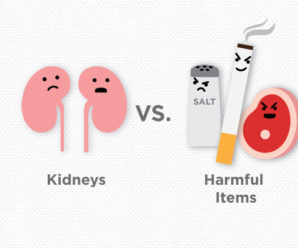
Bone spurs, also known as osteophytes, are developments of calcium at the edge of a joint or places where a tendon inserts into the bone. They can happen almost anywhere in the body but are most commonly found at the knee, hip, shoulder and back of the heel. On their own, these growths should not cause pain and are not a reason for concern. However, they can be an indication of other issues.
What causes bone spurs to form?
Dr. Adam Atkins, sports medicine physician at Marshfield Clinic Health System, explained that bone spurs form when there is a loss of cartilage at the joints or as a reaction to a tendon problem. Cartilage cannot grow back when it is worn away, but bone can. Therefore, developing new bone growths at the edges of arthritic or injured joints is the body’s way of attempting to heal the cartilage loss. Because they can also occur at sites where tendon attaches to bone, the growths can be a reaction to a tendon problem like tendonitis or tearing. The spurs that form are an indication of joint or tendon problems, but are not a problem themselves.
How do I know I have bone spurs?
“The only way to know if you have bone spurs is to get an X-ray,” said Dr. Atkins. “Only in rare cases will a spur cause pain. Any pain at the site of the growth is related to arthritis or loss of cartilage.”
As to when to consult a doctor, Dr. Atkins said in short, never. Since bone spurs don’t cause pain or other symptoms, you should see your doctor about the joint or tendon problems that they indicate rather than the bone spur itself.
What are my treatment options?
There are no direct treatment options for bone spurs because by themselves they do not cause problems. However, if you are treated surgically for tendon or joint issues, a surgeon will remove the growths in the process.
Additionally, there are no definitive ways to prevent spurs from occurring. However, Dr. Atkins explained that preventative measures for arthritis are the best way to go. This includes maintaining a healthy weight, staying as strong as you can, keeping to a healthy diet and exercising regularly.
On the whole, the most important thing to note is that spurs are not the cause of pain. Rather, they are indicators of other problems like arthritis or tendon issues.
If you are experiencing joint pain or believe you have bone spurs, get in touch with your doctor.







Leave a Reply